1803 Born: Justus von Liebig, German chemist and academic (d. 1873)
Justus Freiherr von Liebig (12 May 1803 – 18 April 1873) was a German scientist who made major contributions to agricultural and biological chemistry, and was considered the founder of organic chemistry. As a professor at the University of Giessen, he devised the modern laboratory-oriented teaching method, and for such innovations, he is regarded as one of the greatest chemistry teachers of all time. He has been described as the "father of the fertilizer industry" for his emphasis on nitrogen and trace minerals as essential plant nutrients, and his formulation of the law of the minimum, which described how plant growth relied on the scarcest nutrient resource, rather than the total amount of resources available. He also developed a manufacturing process for beef extracts, and with his consent a company, called Liebig Extract of Meat Company, was founded to exploit the concept; it later introduced the Oxo brand beef bouillon cube. He popularized an earlier invention for condensing vapors, which came to be known as the Liebig condenser.
German stamp depicting Justus von Liebig
1935 Died: Józef Piłsudski, Polish field marshal and politician, 15th Prime Minister of Poland (b. 1867)
Józef Klemens Piłsudski, (5 December 1867 – 12 May 1935) was a Polish statesman who served as the Chief of State (1918–22) and First Marshal of Poland (from 1920). He was considered the de facto leader (1926–35) of the Second Polish Republic as the Minister of Military Affairs. From World War I he had great power in Polish politics and was a distinguished figure on the international scene. He is viewed as a father of the Second Polish Republic re-established in 1918, 123 years after the 1795 Partitions of Poland by Austria, Prussia and Russia.
By 1935, unbeknownst to the public, Piłsudski had for several years been in declining health. On 12 May 1935, he died of liver cancer at Warsaw's Belweder Palace
Polish stamps depicting Józef Piłsudski
The Z3 was a German electromechanical computer designed by Konrad Zuse. It was the world's first working programmable, fully automatic digital computer. The Z3 was built with 2,600 relays, implementing a 22-bit word length that operated at a clock frequency of about 4–5 Hz. Program code was stored on punched film. Initial values were entered manually.
The Z3 was completed in Berlin in 1941 but was not considered vital, so it was never put into everyday operation. Based on the work of Hans Georg Küssner (cf. Küssner effect) e.g. a "Program to Compute a Complex Matrix" was written and used to solve wing flutter problems. Zuse asked the German government for funding to replace the relays with fully electronic switches, but funding was denied during World War II since such development was deemed "not war-important". The original Z3 was destroyed on 21 December 1943 during an Allied bombardment of Berlin. The Z3 was originally called V3 (Versuchsmodell 3 or Experimental Model 3) but was renamed to not be confused with Germany's V-weapons. A fully functioning replica was built in 1961 by Zuse's company, Zuse KG, and is on permanent display at Deutsches Museum in Munich.
The Z3 was demonstrated in 1998 to be, in principle, Turing-complete. However, because it lacked conditional branching, the Z3 only meets this definition by speculatively computing all possible outcomes of a calculation.
Thanks to this machine and its predecessors, Konrad Zuse is often regarded as the inventor of the computer.
German stamp depicting Konrad Zuse
1948 – Wilhelmina, Queen regnant of the Kingdom of the Netherlands, cedes the throne.
Wilhelmina (Wilhelmina Helena Pauline Maria; 31 August 1880 – 28 November 1962) was Queen of the Netherlands from 1890 until her abdication in 1948. She reigned for nearly 58 years, longer than any other Dutch monarch. Her reign saw the First and the Second world wars, the Dutch economic crisis of 1933, and the decline of the Netherlands as a major colonial power.
Wilhelmina was the only child of King William III and his second wife, Emma of Waldeck and Pyrmont. On William's death in 1890, she ascended to the throne at the age of ten under the regency of her mother. In 1901, she married Duke Henry of Mecklenburg-Schwerin, with whom she had a daughter, Juliana. Wilhelmina was generally credited with maintaining Dutch neutrality during the First World War.
Following the German invasion of the Netherlands in 1940, Wilhelmina fled to Britain and took charge of the Dutch government-in-exile. She frequently spoke to the Dutch people over radio and came to be regarded as a symbol of the Dutch resistance. She returned to the Netherlands following its liberation in 1945.
Increasingly beset by poor health after the war, Wilhelmina abdicated in September 1948 in favour of Juliana. She retired to Het Loo Palace, where she died in 1962.
Dutch, Suriname and Netherlands Indies stamps depicting Wilhelmina
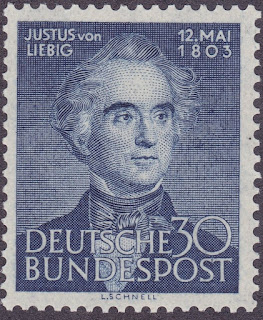


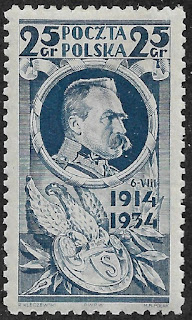
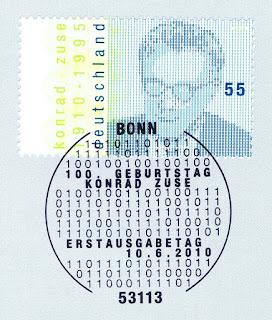

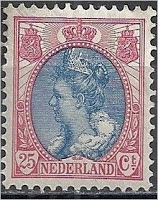
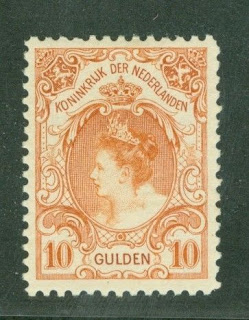
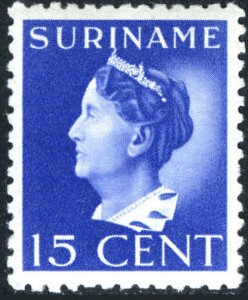


No comments:
Post a Comment